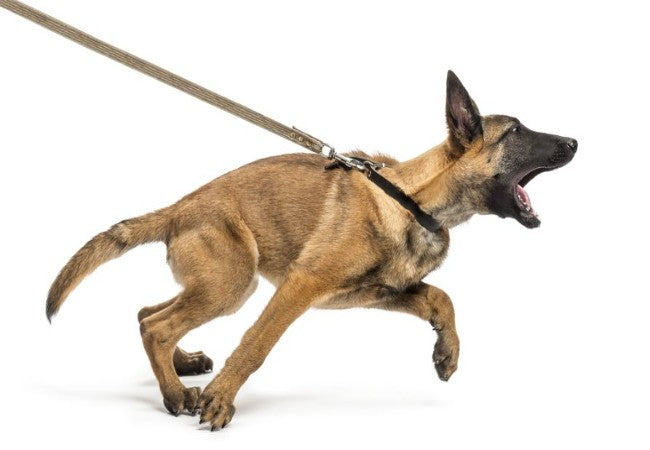Vet Approved Guide Leash Reactivity in Dogs 2025 🐶🩺

In this article
Vet Approved Guide Leash Reactivity in Dogs 2025 🐶🩺
By Dr. Duncan Houston BVSc
Walking a reactive dog can be exhausting, stressful, and confusing for pet parents. As a veterinarian, I regularly help dog owners understand and resolve leash reactivity—a condition where dogs lunge, bark, or growl at other dogs, people, or objects while on leash. Whether it stems from fear, frustration, or lack of socialization, reactivity is manageable with the right tools and techniques. This in-depth guide breaks down the causes, triggers, and solutions so you and your pup can enjoy calm, confident walks. 🐾🌳
🧠 What Is Leash Reactivity?
Leash reactivity is when a dog overreacts to stimuli while restrained by a leash. This could look like:
- 🔊 Barking or growling at other dogs
- 💨 Lunging or pulling intensely
- 🧍 Reacting to people, cars, bikes, or noises
- 😬 Showing signs of stress: yawning, lip licking, or panting
Reactivity is not the same as aggression. Many leash-reactive dogs are friendly off-leash but become frustrated or fearful when restricted. Recognizing this difference is key to effective training and compassionate handling. ❤️
🔍 Common Triggers for Leash Reactivity
Dogs can react to a wide range of sights and sounds, but some triggers are more common than others:
- 🐕 Other dogs (especially when approached head-on)
- 🧍 Strangers (men, children, or people with accessories)
- 🚲 Fast-moving objects like bikes, scooters, or joggers
- 🔊 Loud noises (construction, traffic, alarms)
Each dog’s triggers are unique. Keeping a journal of your dog's outbursts can help you identify patterns and adjust your walking route and training plan accordingly. 📝
❓ Why Does Leash Reactivity Happen?
Understanding the root cause of leash reactivity is essential to addressing it. Here are some common underlying reasons:
😤 Frustration
Some dogs love other dogs or people but become frustrated when they can’t interact. This is common in high-energy, social breeds like Labradors or Boxers.
😨 Fear or Anxiety
Dogs with a history of trauma or limited socialization may see others as threats. They react to create distance and feel safe.
📦 Poor Early Socialization
Puppies not exposed to a variety of stimuli during their critical development period may grow up unsure or afraid of new sights and sounds.
🧬 Genetics & Breed Traits
Some breeds (e.g., herding or guarding dogs) are naturally more alert and reactive to environmental changes. It’s not “bad behavior”—it’s biology.
Regardless of the cause, the solution lies in trust-building, training, and professional support when needed. 💡
🛠️ How to Manage Leash Reactivity: A Step-by-Step Vet-Approved Plan
Here’s a proven framework to help calm your dog’s reactivity over time:
1. 🎯 Identify Your Dog’s Threshold
The threshold is the distance at which your dog starts reacting. Staying below this distance during training prevents triggering a full-blown reaction and helps them learn new associations.
2. 🍗 Use Counter-Conditioning
Pair the appearance of a trigger with a high-value treat. For example, when another dog appears, feed your pup cooked chicken or cheese before they react. This changes the emotional response from “uh-oh!” to “yum!” 🧀
3. 🎓 Teach Reliable Focus Cues
- "Watch me" 👀 – Encourages eye contact instead of fixating on the trigger
- "Touch" ✋ – Distracts the dog with a nose-target to your hand
- "Let’s go!" 🚶♀️ – Redirects your dog to walk away calmly
4. 🧰 Use the Right Gear
- Front-clip harness: Helps gently redirect without neck strain
- Head halter: Offers maximum control for strong dogs
- 6-foot leash: Allows natural movement and management space
5. ❌ Avoid Corrections or Punishment
Scolding or jerking the leash can increase fear and reactivity. Focus on prevention and redirection, not punishment. Training must be positive and consistent to be effective. ✅
🧘♂️ Calming the Environment & Mind
🕓 Maintain a Routine
Dogs thrive on predictability. Set a daily rhythm for meals, walks, and rest to lower anxiety levels overall.
🧩 Add Mental Enrichment
Boredom worsens reactivity. Use food puzzles, scent games, and training exercises to stimulate your dog’s brain indoors. 🧠🐾
🚨 When to Get Help from a Professional
If your dog’s behavior doesn’t improve after 2–4 weeks of consistent training, or if their reactivity is intense and dangerous, seek help:
- 🐾 Veterinarian: Rule out medical issues (e.g., pain, vision problems)
- 🎓 Certified trainer: Look for force-free professionals with leash reactivity experience
- 🧠 Veterinary behaviorist: For complex cases requiring a medical-behavioral approach
You can also consult directly through the Ask A Vet app for behavior support from licensed vets—right from your phone. 📱🩺
🐶 Breeds More Prone to Reactivity
While any dog can develop leash reactivity, these breeds are more likely to show high alertness or reactivity:
- 🚨 German Shepherds
- 🐕 Border Collies
- 🛡️ Belgian Malinois
- 🐺 Akitas and Shiba Inus
- 🧨 Jack Russell Terriers
Breed tendencies don’t excuse bad behavior—but they do inform our approach. These dogs thrive with mental work, consistent training, and structured outlets. 🧠🧡
✅ Summary: Calm, Happy Walks Are Possible
Managing leash reactivity isn’t about “fixing” your dog—it’s about teaching new coping skills. With compassion, consistency, and expert guidance, most dogs can learn to walk calmly and confidently. 🎉
Final Tips:
- 🐾 Avoid triggering situations until training progresses
- 🎯 Focus on positive reinforcement, not punishment
- 🧠 Add daily enrichment and routine
Need expert help? Visit AskAVet.com or download the app to get real-time guidance from licensed veterinarians. Support is just a tap away! 📱🩺






